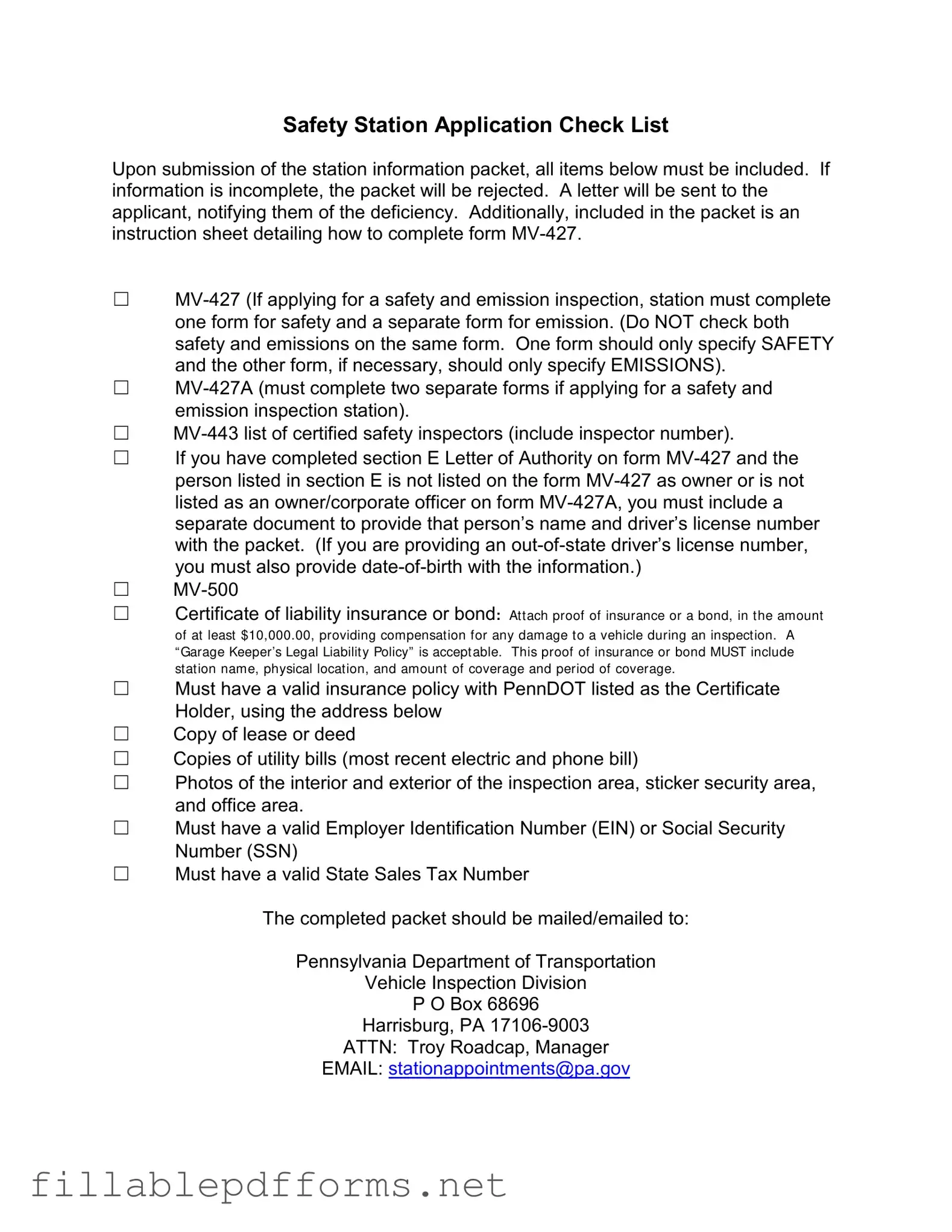The MV-427 form is a crucial document for anyone looking to establish or modify an inspection station in Pennsylvania. This application is not just a formality; it serves as the foundation for safety and emissions inspections within the state. Applicants must submit a complete station information packet, which includes the MV-427 form, along with several supporting documents. These documents range from proof of liability insurance to a list of certified safety inspectors. Each item must be included, or the packet will face rejection. The form itself requires clear and accurate information, as any inaccuracies can invalidate the application. Specific sections of the MV-427 guide applicants through various scenarios, such as applying for a new station, changing ownership, or updating the station's location. Additionally, applicants must ensure that they do not mix safety and emissions applications on the same form, as separate submissions are required for each type. With a well-organized approach and attention to detail, prospective inspection stations can navigate the application process effectively and begin their operations with the necessary approvals from the Pennsylvania Department of Transportation.
